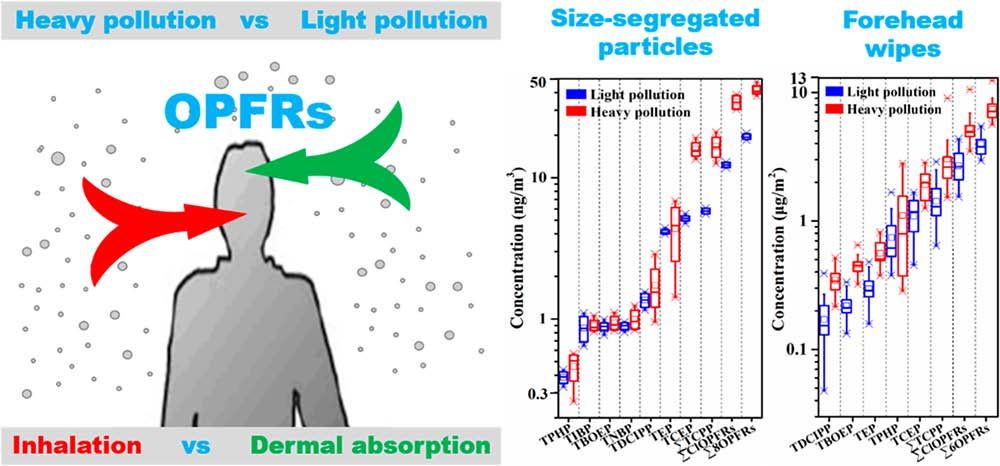
重度雾霾天气对人群暴露于PFRs的影响·Influence of Air Pollution on Inhalation and Dermal Exposure of Human to Organophosphate Flame Retardants: A Case Study During a Prolonged Haze Episode

Abstract
The health impact of haze is of great concern, but few studies have explored its influence on human inhalation and dermal exposure to trace pollutants. Sizesegregated atmospheric particles (n = 72) and forehead wipe samples (n = 80) from undergraduates were collected in Xinxiang, China, during a prolonged haze episode and analyzed for 10 organophosphate flame retardants (OPFRs). ΣTCPP and TCEP were the most abundant OPFR substances in all samples. The arithmetic mean particlebound and forehead OPFR concentrations under a heavy pollution condition (air quality index (AQI), 350−550) were 41.9 ng/m3 Σ8OPFRs) and 7.4 μg/m2 (Σ6OPFRs), respectively, pparently greater than the values observed under a light pollution condition (AQI, 60−90) (19.5 ng/m3 and 3.9 g/m2, respectively). Meteorological conditions played distinctive roles in affecting the OPFR occurrence in atmospheric particles (statistically significant for TCEP and ΣTCPP) and forehead wipes (excluding TPHP), implying that OPFR exposure through inhalation and dermal absorption was synchronously influenced by air quality, and OPFRs on the forehead may be mainly absorbed from the air. Inhalation contributed dominantly to the total OPFR exposure dose for humans when using the relative absorption method to assess dermal exposure, while according to the permeability coefficient method, dermal exposure was much more significant than inhalation. The results of this study indicate that OPFR exposure should attract particular concern in regions with heavy air pollution.
【全文链接】

见微知著·原始反终 ●新兴污染物环境归趋研究组(FECG)